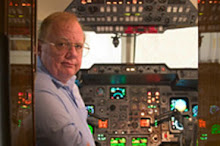I was talking with a fellow passenger on a commercial flight recently about all the cost-cutting on the airlines. He remarked that it's unfortunate that Travelocity and other websites have "trained" consumers to look for the lowest fare from point A to point B. Most consumers don't realize that costs add up when you actually calculate the charge for extra time, extra connections, extra baggage fees, extra lodging to get the "best fare" days, and extra bad airport food during layovers.
The casual customer may end up spending a lot more on a trip than he or she expects to spend.
Hence, the public has acquired the perception that travel is not for the budget-minded. (And who isn't budget-minded these days?) We can’t help but wonder if it’s contributed to the popularity of online meetings, and the newly coined term for family “staycations” for families who vacation without traveling.
In Jeffrey J. Fox's classic book "How to Become a Rainmaker," Fox emphasizes the need to "show them the money" for each deal for each prospective client.
To do this, you have to understand what the customer is actually buying.
What the customer really values
To use the example from the book, let's say you are in a paint store evaluating two brands of house paint. Brand A is $10 a gallon and Brand B is $18 a gallon. Brand A has the lowest price, but Brand B has more pigment, thereby requiring one less coat of paint than Brand A. Which paint is the better value?
If you want a gallon of paint, Brand A is the better value. If you want a painted house, Brand B is the better value, assuming you would use half as much paint – even before you calculate time spent painting!
A key activity of anyone in business is to figure out what the customer is really after, then offer him the best value for his dollar. This doesn't necessarily equate to the cheapest product or the lowest fare.
Most people don’t buy a product or service, they buy the means to meet their agenda.
Very smart people in aviation companies (some of whom also happen to be ABCI clients) have done the hard work of figuring out what their customers really value. It’s more than a difference of semantics –it’s a difference of mindset, and it seems that for the airlines, it’s gotten lost in the recent fray over price.
Examples of value propositions from the aviation field
- Taylor Greenwood understands that his clients aren't necessarily just buying pretty photographs. What they really want is to improve their odds of selling an aircraft that is listed in a sales publication with many others of its type. His client's aircraft has to be noticed first and has to command a better price. This impacts the way Greenwood approaches the job. He's keenly aware that he has to inspire the viewer to buy the aircraft, and focuses on the features most likely to add to the desirability and selling price.
- Aerographs’ clients don’t necessarily just want a fine art print of a vintage aircraft. These clients want to enhance their office with an elegant feeling and a touch of class and nostalgia. These aviation attorneys, tax specialists, real estate agents and insurance folks know that an appropriate piece of art makes a connection with clients and other visitors to the office.
- Summit Aviation’s clients don’t necessarily just want DVDs of aviation regulations. What they really want is the ability to make critical decisions faster, the ability to get more done without hiring more people to do research, and the peace of mind that comes from knowing they're in compliance with the latest in a formidable body of aviation rules and regs.
The Value of Air Travel
In the case of commercial air travel, what customers want is the means to get a job done in a distant city or a nice vacation with the family. If commercial air travel becomes so inconvenient that it gets in the way of the real value of air travel, they lose customers, no matter how cheap a ticket might become.
I used to fly commercial from Salt Lake City to San Francisco to teach business writing seminars. I’d fly out in the morning and be back in time to pick up my son from school. If I couldn’t be on time getting to San Francisco, a roomful of grouchy people would be waiting for me, or more likely demanding their money back and vowing never to have anything to do with my company again. If I was late getting back to Salt Lake, it was even worse - I’d have a grouchy 9-year-old. Precarious as it might sound by today's standards, (with about an hour and a half of margin planned on either end) I was able to keep this schedule up, month in and month out, for several years.
When the on-time statistics started to slip, I started delivering my seminars on the web. I missed being in the classroom with students. I didn’t make as much money – a classroom seat in a seminar commands a higher price than a "virtual" seat in a webinar. But I couldn’t afford the risk.
An airline ticket, at ANY price, was worthless to me if it didn’t get me there and back on time.
Actually, it was worse than worthless if it ruined my reputation with my customers or with my kid.
Now that I know of some cost-effective business aviation alternatives, I would probably do that. Spend less money, enjoy it more, and get full value for my money.
--- --- ---
Follow Wheels Up on Twitter: twitter.com/Wheels_Up
This is a great example of what we need to do to promote aviation to combat the attacks on general aviation and the use of corporate aircraft.
